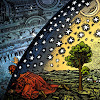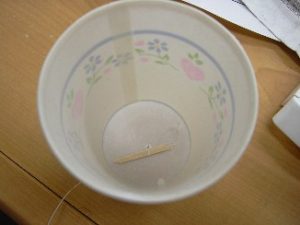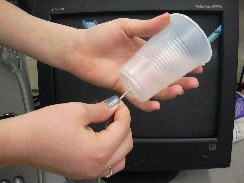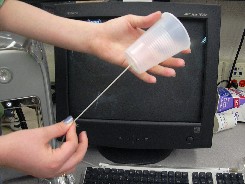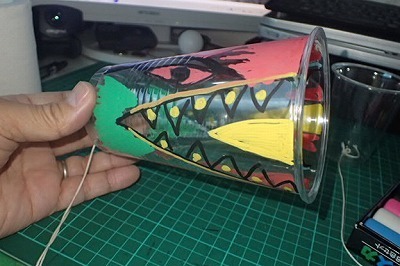If you liked the Moose Call project, you might also like another quick and easy sound project that turns a straw into a reed instrument (saxophones, clarinets, snake charmer's horns, harmonicas and duck calls are all reed instruments).
Here is a page from the howstuffworks people about sound. I really like the animation they have of a bell ringing. It shows how air molecules collide against each other to create a spreading shock wave to our ears. It's a more interesting way to begin to understand sound than still pictures. If you can't see the Flash animation, you can try watching the movie below.
Here is a product which is very similar to the Moose Call. However, instead of a string there is a "tape" with very precise grooves (similar to LP record groves--before CDs) that create words when you pull the string. The phrases are hard to understand. I found "happy new year" to be the easiest to understand.
This page is still under construction. If you know of a good web page about sound, please contact me and let me know.
